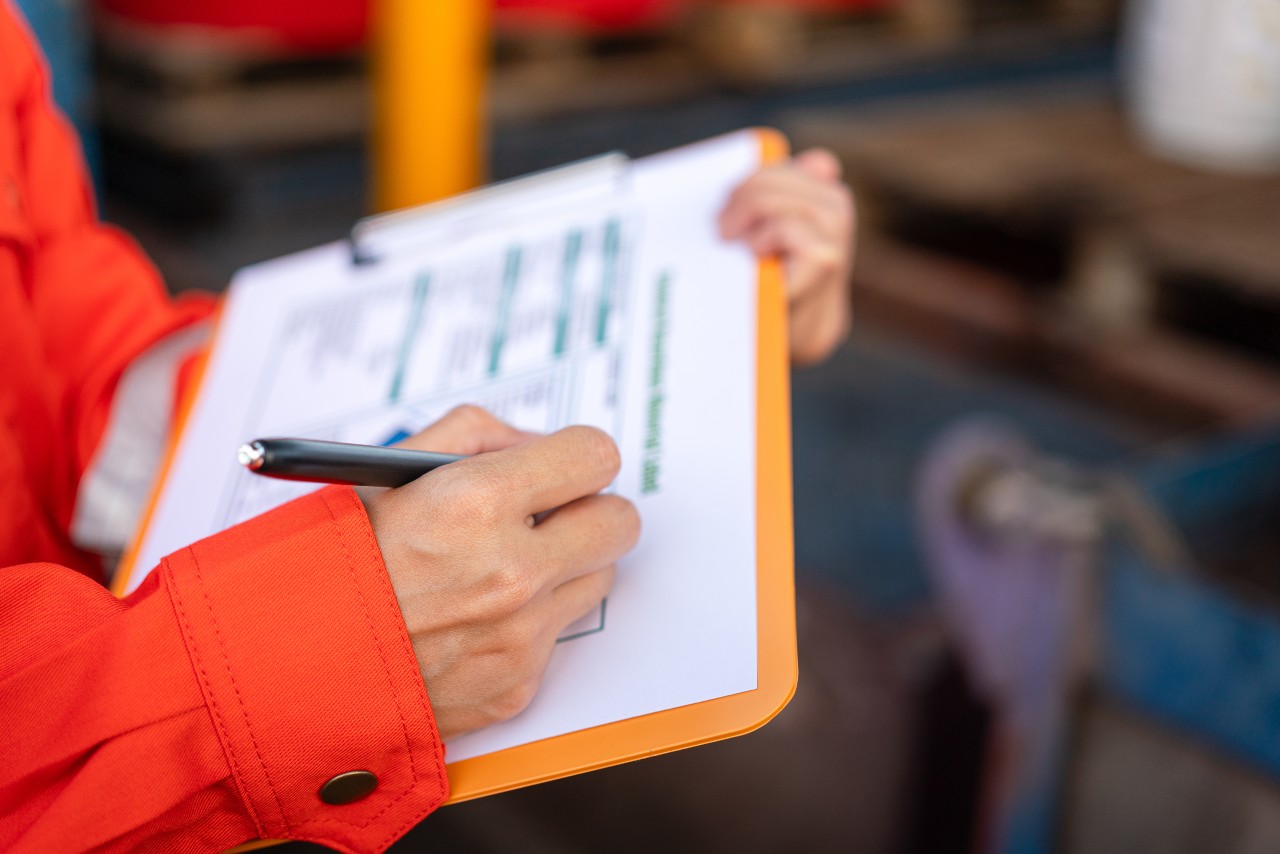Your maintenance plan should be tailored to your specific facility, but some essential features apply universally. The easiest way to manage these tasks is by using a preventive maintenance checklist. Having a checklist simplifies the process, ensuring that procedures, maintenance, and information are not buried in manuals but are readily available to your capable staff through standardized PMs stored in your CMMS.
Checklists offer an excellent way to standardize routine tasks that require regular attention. In particular, a preventive maintenance checklist can streamline various preventive maintenance responsibilities. By standardizing PMs in your CMMS, you ensure that maintenance processes and essential information move from manuals to the hands of competent personnel.
This article will guide you through the process of creating preventive maintenance checklists to boost the effectiveness and cost-efficiency of your maintenance team.
What Is a Preventive Maintenance Checklist?
A preventive maintenance checklist helps keep track of regular maintenance tasks. When a preventive maintenance schedule is created in NEXGEN, for example, these checklists automatically load onto a work order so teams know exactly what should be done for routine preventive maintenance programs. For instance, the checklist for a PM program called “Daily Cleaning: Admin Building” might include tasks such as cleaning windows, vacuuming carpets, and any other standard janitorial tasks that have to be completed every day.
The main benefit of using a preventive maintenance checklist is that it helps keep equipment in good shape by making sure tasks get done on time and by streamlining maintenance processes so that checklists don’t have to be rewritten every time a PM fires a work order. We’ll look at different types of preventive maintenance checklists next.
Examples of Preventive Maintenance Checklists
-
Pass-or-Fail (Inspection Forms)
Certain machine parts need to be in specific conditions for optimal performance. For instance, a compressor should operate within a certain temperature range. A pass-or-fail maintenance checklist (or in NEXGEN, an inspection form) might involve checking the compressor’s temperature against set standards. If it falls within the range, it passes; if not, it fails. These inspections prevent bigger problems by scheduling maintenance before it’s too late.
Sample Pass-or-Fail Maintenance Checklist:
- Check Machine-X’s strokes per minute. Is it between 380-460? (Yes/Pass, No/Fail)
- Measure the outlet temperature of Machine-X’s product using an infrared thermometer. Is it below 98°F? (Yes/Pass, No/Fail)
- If you marked “No/Fail” for any task, inform maintenance or create a work request in your CMMS.
-
Step-by-Step
Some parts of machines need regular checks to prevent issues. For instance, a motor might need changing after running for 600 hours. A step-by-step checklist guides you through each step of this preventive maintenance process. These checklists make sure important steps aren’t missed, reducing the chances of breakdowns. They often involve complex tasks and are usually handled by maintenance technicians.
Example of a Step-by-Step Checklist:
- Lock the main panel to ensure safety during maintenance.
- Test the machine to confirm that it won’t run due to the lockout.
- Take off the belting from the conveyor.
- Replace both bearings on the non-drive side and check the shaft for any damage.
- Put the conveyor belting back in place.
- Remove the lockout/tagout and test the conveyor at different speeds: 5%, 10%, and 15% on the Variable Frequency Drive (VFD).
Before Creating Your Preventive Maintenance Checklist
-
Assess Your Facility’s Current Status
Take a close look at your facility to see how well everything is working. Figure out what areas need improvement in terms of efficiency, quality, uptime, and maintenance. Understand every detail that requires preventive maintenance.
-
Find Equipment Documentation
For machines, follow the guidelines and recommendations provided by the manufacturer for preventive maintenance.
-
Develop Your Records
While a basic machine maintenance checklist is helpful, create comprehensive documentation outlining your preventive maintenance plan and procedures. Make sure all employees can access and review this information easily.
Once these initial steps are done, you can begin creating a preventive maintenance checklist.
Types Of Preventive Maintenance Checklists And Tasks
-
Preventive Maintenance for Facility Infrastructure
- Ensure enough space between machines for safety.
- Make sure to mark safety and caution areas.
- Keep walkways and exits clear of debris.
- Secure wires properly to avoid hazards.
- Regularly check and maintain stairway and walkway railings.
- Inspect building structures yearly to prevent damage.
- Thoroughly check and repair building systems like electrical, plumbing, and networks annually.
- Test fire detectors twice a year to comply with regulations.
- Assess external areas, including parking facilities, for any dangers.
- Inspect the roof at least once a year.
- Maintain lighting by replacing bulbs, cleaning fixtures, and fixing faulty parts.
- Keep HVAC systems in good condition by regularly cleaning or replacing filters and inspecting components like ducts and fans.
-
Preventive Maintenance For Machines
- Regularly check and clean filters to keep them in good condition.
- Make sure bolts and nuts are secure by inspecting and tightening them as needed.
- Ensure safety guards and devices are working properly by inspecting them regularly.
- Keep mechanical brakes or clutches clean and well-maintained.
- Check cooling systems like radiators for any debris or damage that may affect performance.
- Look for leaks in hydraulic systems and address them promptly.
- Keep lubrication levels in check and refill when necessary.
- Check alignment and make adjustments if things aren’t lined up correctly.
- Monitor pressure and flow rates in hydraulic and pneumatic systems to ensure they’re functioning correctly.
- Pay attention to any unusual vibrations, noises, or signs of wear that may indicate a problem.
- Replace worn or damaged hydraulic fluid lines to prevent malfunctions.
- Keep chains, gears, and sprockets clean and lubricated for smooth operation.
- Test safety interlocks and limit switches to verify they’re working as they should.
- Regularly test the machine’s operation to ensure it’s functioning correctly.
- Inspect electrical connections and wiring for signs of wear or damage.
- Before and after each shift, make sure machinery is clear of debris to prevent accidents.
- Clean machine surfaces daily to remove dirt, lubricant, and loose debris.
- Test backup systems like emergency stop buttons to ensure they’re ready when needed.
- Verify calibration if applicable to maintain accuracy.
- Check control systems regularly, including software updates and backups, to keep operations smooth and reliable.
-
Preventive Maintenance For Material Handling Equipment
- Make sure to regularly inspect belts for any signs of damage.
- Review the calibration and programming of gantry machines. This can help find any areas where things could be done more efficiently.
- Clean belts and other equipment that directly touches materials and inventory at least once a day.
- Check and take care of motors and other power sources at least twice a year.
- Examine electrical connections, cables, and wires for any signs of damage or loose parts.
- Test safety features like emergency stop buttons and warning lights to ensure they’re working properly.
-
Preventive Maintenance for Network and Data Systems
As more systems become connected, keeping data safe is crucial for industrial facilities, just like any other organization.
- Check your network security regularly.
- Keep an eye out for recent threats to your network security.
- Make sure employees follow safe practices, like strong passwords and being cautious with emails.
- Change Wi-Fi and network passwords often.
- Create digital backups.
- Keep software and firmware up to date.
- Improve physical security.
- Regularly inspect network hardware for signs of damage or malfunction.
How to Create Preventative Maintenance Checklists
Not all maintenance checklists are the same. Poorly designed ones can be just as problematic as not having any to begin with. The good news is that no matter whether you’re part of a brand-new company or a fully established one, you’re already on the right track to building great checklists. Your maintenance team possesses the necessary information; the crucial step is to structure and formalize it into established processes. Here are 7 things to keep in mind during this process:
- Prioritize Safety: Start and end your preventive maintenance checklists with safety instructions. Include details like required safety gear, lock-out tag-out instructions, and steps for sanitizing the area.
- Sequential Order: List tasks in the order they should be completed to ensure a smooth workflow in your preventive maintenance checklists.
- Stick to the Framework: Your checklist should follow a consistent framework for preventive maintenance tasks, following a logical sequence where possible.
- Clear and Detailed Checklists: Checklists for preventive maintenance (PM) need to have the right amount of detail. They should be detailed enough for new technicians to understand and complete tasks just by following the checklist.
- Use Visuals: PM checklists should include pictures or diagrams to help technicians better understand the instructions. Visuals make tasks easier to follow and clear up any confusion.
- Keep It Short and Clear: Every task on a PM checklist should be concise and have a clear action and goal. This ensures maximum efficiency and makes it easy for technicians to follow the checklist without any confusion.
- Include Time Estimates: Each checklist or task should mention how much time it’s expected to take. This helps technicians manage their time better, preventing them from feeling rushed and ensuring they can complete tasks without any unnecessary pressure.
Use NEXGEN’s CMMS For Preventive Maintenance Excellence
Thinking about creating preventive maintenance checklists to improve your maintenance strategy? Consider using NEXGEN, our intelligent asset management system. It’s cloud-based, works on mobile devices, and can help make your maintenance processes more organized and effective. If you need a modern CMMS system that supports preventive maintenance, has an easy setup process, and offers great customer support, NEXGEN is a great choice.
CMMS For Preventive Maintenance Excellence
NEXGEN can help make your maintenance processes more organized and effective. Ready to improve your maintenance operations? Schedule a demo of NEXGEN today.
FAQs
-
What is the purpose of preventive maintenance checklists?
A preventive maintenance checklist helps maintenance workers work efficiently with a ready-made, step-by-step process to reference during their preventive maintenance activities. A checklist tracks progress made and ensures that equipment stays in good shape and avoids unexpected issues.
-
Who should use PM checklists?
Maintenance teams should use preventive maintenance checklists to track their progress and verify all steps in a process have been completed. Their supervisor or the maintenance manager should then be in charge of verifying the lists to make sure everything is going as planned.
-
What are the benefits of a PM checklist?
A preventive maintenance checklist is crucial for many industries. It helps prevent equipment from breaking down and keeps things running smoothly. By regularly checking and fixing machinery, companies can save money on repairs, keep things safe for workers, and make sure operations stay on track.






